Buckwheat Banana Crepes
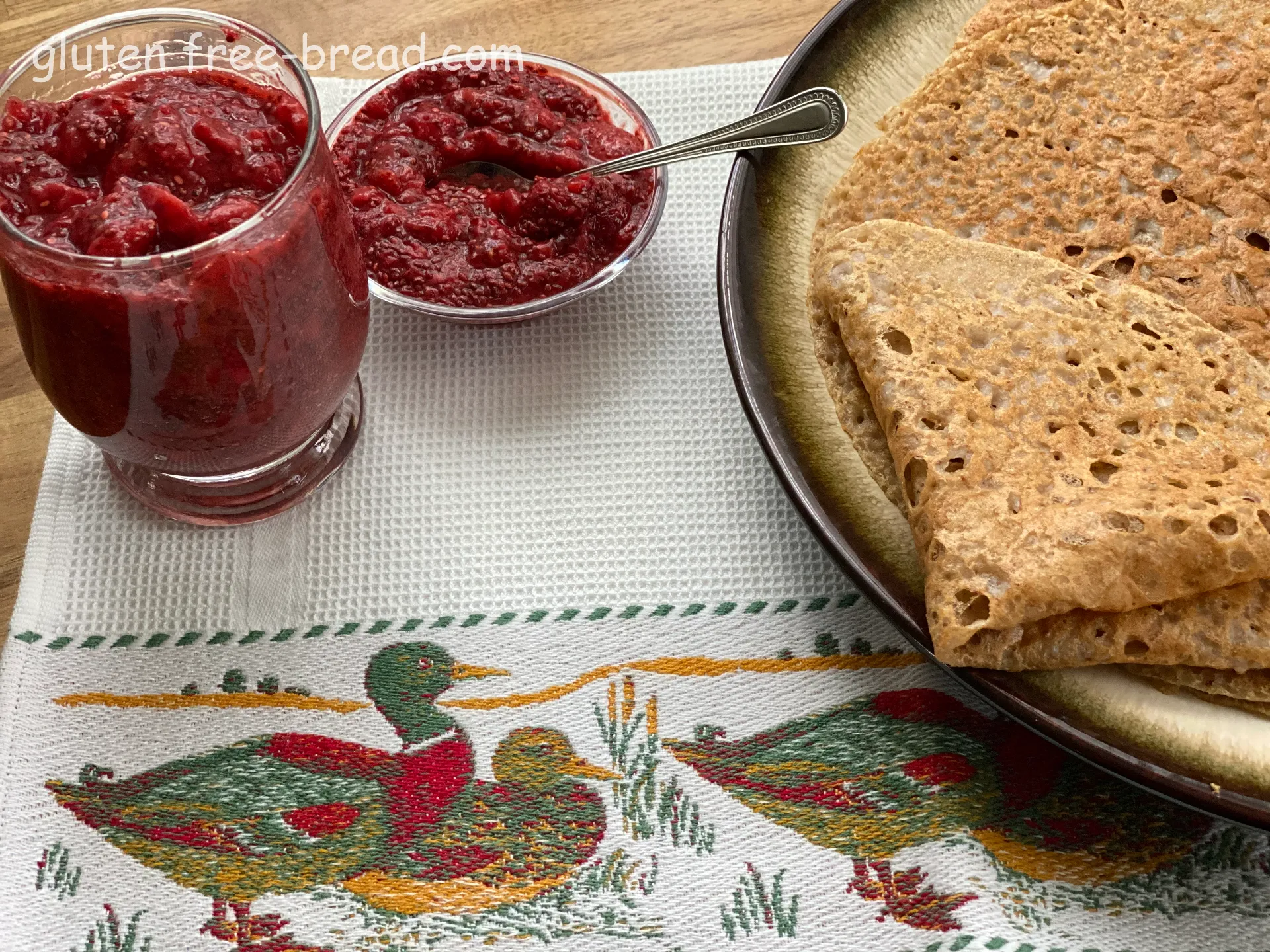
Ingredients:
| Name | Metric | US | TIP | |
|---|---|---|---|---|
| Raw Buckwheat Groats | 200 gr | 1 cup | ||
| Banana | 1 | 2/3 cup | ||
| Water | 350 ml | 1 1/2 cups | ||
| Salt | 3 gr | 1/2 teaspoon | ||
| Baking Soda | 3 gr | 1/2 teaspoon | ||
| Apple Cider Vinegar | 15 ml | 1 tablespoon |
Optional Ingredients :
| 5 ml/ 1 tsp Vanilla | |
| 3 gr / ½ teaspoon Cinnamon |
Equipment:
| Blender |
Steps:
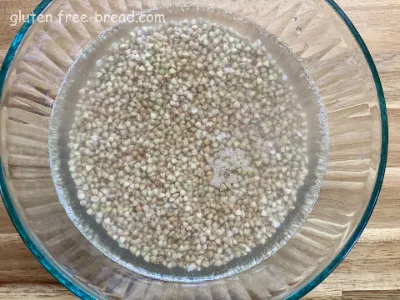
Step 1
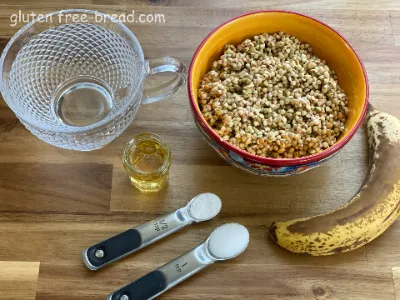
Step 2
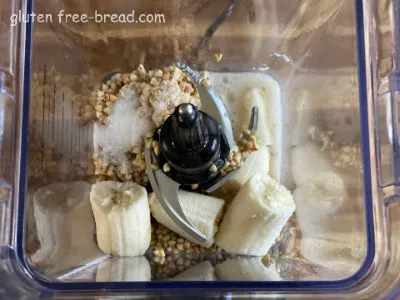
Step 3

Step 4
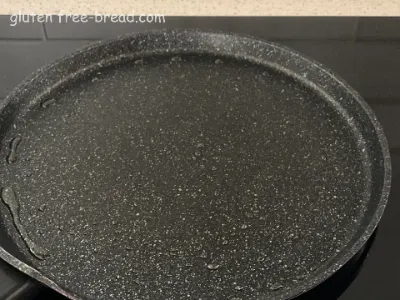
Step 5
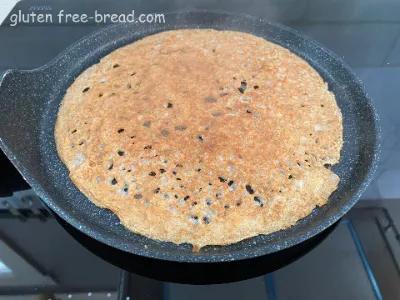
Step 6
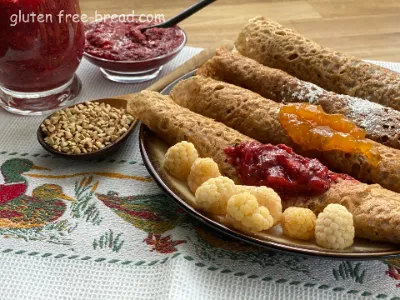
Step 7
Notes:

Buckwheat Banana Crepes
Here are some tips for making perfect crepes:
Use the right batter consistency: The crepe batter should be thin, similar to the consistency of heavy cream. If it's too thick, the crepes will be too dense; if it's too thin, they may tear easily.
Let the batter rest: Allow the batter to rest for at least 10 minutes before cooking. This allows the flour/grains to fully hydrate and results in smoother crepes.
Preheat the pan: Preheat a non-stick skillet or crepe pan over medium heat before adding the batter. The pan should be hot enough that a drop of water sizzles and evaporates immediately.
Use the right amount of batter: Pour just enough batter into the pan to thinly coat the bottom when swirled. You can use a ladle or measuring cup to portion out the batter.
Swirl the batter: Once you pour the batter into the pan, quickly tilt and rotate the pan to spread the batter evenly in a thin layer. This helps create a uniform thickness for the crepe.
Cook on one side first: Cook the crepe on one side until the edges start to brown slightly and the surface appears dry, about 1-2 minutes.
Flip carefully: Use a thin spatula to gently lift and flip the crepe. If you're new to making crepes, you can use your fingers to help guide the crepe as you flip it.
Cook briefly on the other side: Cook the crepe on the other side for another 15 seconds or until lightly browned.
Addind baking soda:Adding baking soda to crepe batter is often optional. If a recipe calls for soda but you prefer not to use it or don't have any on hand, you can often omit it without affecting the outcome of the crepes. The crepes may be slightly denser and may not brown as evenly, but they still will be tasty and perfectly edible.
Keep warm: If you're making a large batch of crepes, you can keep them warm by covering the stack with a clean kitchen towel while you finish cooking the rest.
Experiment with fillings: Get creative with your crepe fillings! Sweet options like Nutella, fresh fruit, whipped cream, or jam are classic choices, while savory options like cheese, ham, spinach, or mushrooms can also be delicious.
With practice and patience, you'll be able to master the art of making perfect crepes every time!
Buckwheat Banana Crepes additional information:
Soaking grains when cooking quick breads can provide several advantages:
Moisture retention: Soaking grains helps them absorb moisture, resulting in a softer and more moist texture in the finished bread. This can prevent the bread from becoming dry or crumbly, enhancing its overall quality and enjoyment.
Improved texture: Soaking grains can soften their texture, making them easier to incorporate into the batter or dough. This can result in a smoother and more uniform texture in the final product, with fewer noticeable grainy or gritty bits.
Enhanced flavor: Soaking grains can help release their natural sugars and starches, resulting in a richer and more flavorful bread. This can contribute to a more complex taste profile and a more enjoyable eating experience.
Digestibility: Soaking grains can help break down anti-nutrients, such as phytic acid, which can inhibit the absorption of nutrients in the body. This can improve the digestibility of the bread and increase the availability of nutrients for absorption.
Nutritional benefits: Soaking grains can increase their nutritional value by activating enzymes that help break down complex carbohydrates and proteins. This can make the nutrients in the grains more bioavailable, allowing your body to better absorb and utilize them.
Overall, soaking grains when cooking quick breads can result in bread that is softer, more flavorful, and easier to digest, while also maximizing its nutritional content. It's a simple technique that can significantly improve the quality of the finished product and enhance your overall baking experience.
Adding vinegar when soaking grains can offer several benefits, particularly in terms of reducing the phytic acid content in grains, which can inhibit the absorption of minerals like iron, zinc, and calcium in the body. Here's why adding vinegar when soaking grains can be beneficial:
Reduction of phytic acid: Vinegar is acidic, and this acidity can create an environment that breaks down phytic acid during soaking. Phytic acid is an anti-nutrient found in the outer layer of grains and seeds, which can bind to minerals and inhibit their absorption in the body. By adding vinegar to the soaking water, the acidity helps reduce the phytic acid content, increasing the bioavailability of minerals in the grains and seeds.
Improved digestibility: Breaking down phytic acid during soaking can improve the digestibility of grains and seeds. Phytic acid can also inhibit the activity of digestive enzymes, so reducing its content can aid in the digestion and absorption of nutrients.
Enhanced nutrient absorption: By reducing the phytic acid content, adding vinegar when soaking grains can increase the availability of minerals like iron, zinc, and calcium in the body. This can lead to better overall nutrient absorption and utilization.
Potential flavor enhancement: While vinegar itself may not significantly affect the flavor of the grains, it can add a subtle tanginess that may complement certain dishes. However, it's important to use vinegar in moderation to avoid overpowering the natural flavors of the grains.
Overall, adding vinegar when soaking grains can be a beneficial practice, especially for individuals looking to maximize the nutritional benefits of grains and seeds in their diet. However, it's important to note that soaking times may vary depending on the type of grain and the desired outcome, so it's best to follow a recipe or guideline for best results.
Generally, a small amount of vinegar is added to the soaking water to provide the benefits of acidification without overwhelming the flavor of the grains.
A common ratio is about 1 to 2 tablespoons of vinegar per cup of water used for soaking grains. However, this can be adjusted based on individual taste preferences and the specific recipe being used. Some recipes may call for slightly more or less vinegar depending on the desired flavor profile and the type of grains being soaked.
It's important to use vinegar in moderation, as too much can overpower the flavor of the grains and the final dish. White vinegar, apple cider vinegar, or rice vinegar are popular choices for soaking grains.







